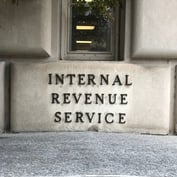What You Need to Know
- The NAIC set the current commercial real estate “charge” levels in the early 1990s, before insurers had much data on real estate risk.
- U.S. life insurers ended 2019 with about $63 billion in real estate investments.
- The ACLI says real estate losses have been low, even during the Great Recession.
State insurance regulators are working on a change in the rules for counting life insurers’ assets.
In theory, the change could lead life insurers to spend billions of dollars more on buying office buildings, apartment complexes, industrial properties and other types of commercial real estate.
The American Council of Life Insurers wants the National Association of Insurance Commissioners to cut the charge life insurers now must apply to the value of the real estate they own to 11%, from 15%.
U.S. life insurers and other U.S. insurers use risk-based capital (RBC) ratios to show how much capital they retain to support the benefits they have promised, after adjusting for the risk level of the investment vehicles they have used to manage store their assets.
If a life insurer owns an office building or other commercial real estate, the ACLI’s proposal would increase the amount of building value the insurer could include in RBC ratio calculations.
The Possible Impact
The ACLI itself has suggested, in a proposal it sent to the NAIC in April 2017, that a real estate RBC charge reduction would probably not lead to big increases in life insurers’ real estate investment holdings.
“While the recommended decrease in RBC charge is material, we believe it is unlikely that insurance companies will make large changes to their commercial real estate (CRE) allocations in response to changes in the RBC factor, as allocation decisions are based on a number of factors, including asset-liability management, taxation, sector investment expertise and experience,” according to the ACLI.
The National Association of Real Estate Investment Trusts says the U.S. commercial real estate market had a total value of about $16 trillion in 2018.
Life insurers ended 2019 with only about $63 billion of their $4.6 trillion in cash and invested assets invested directly in real estate, according to the NAIC’s Capital Markets Bureau.
The value of life insurers’ commercial real estate holdings amounted to only about 0.4% of the U.S. commercial real estate market’s total value.
But annual U.S. commercial real estate deal volume has been averaging between $400 billion to $500 billion per year, according to CBRE Research.









 April 09, 2021 at 09:27 AM
April 09, 2021 at 09:27 AM











